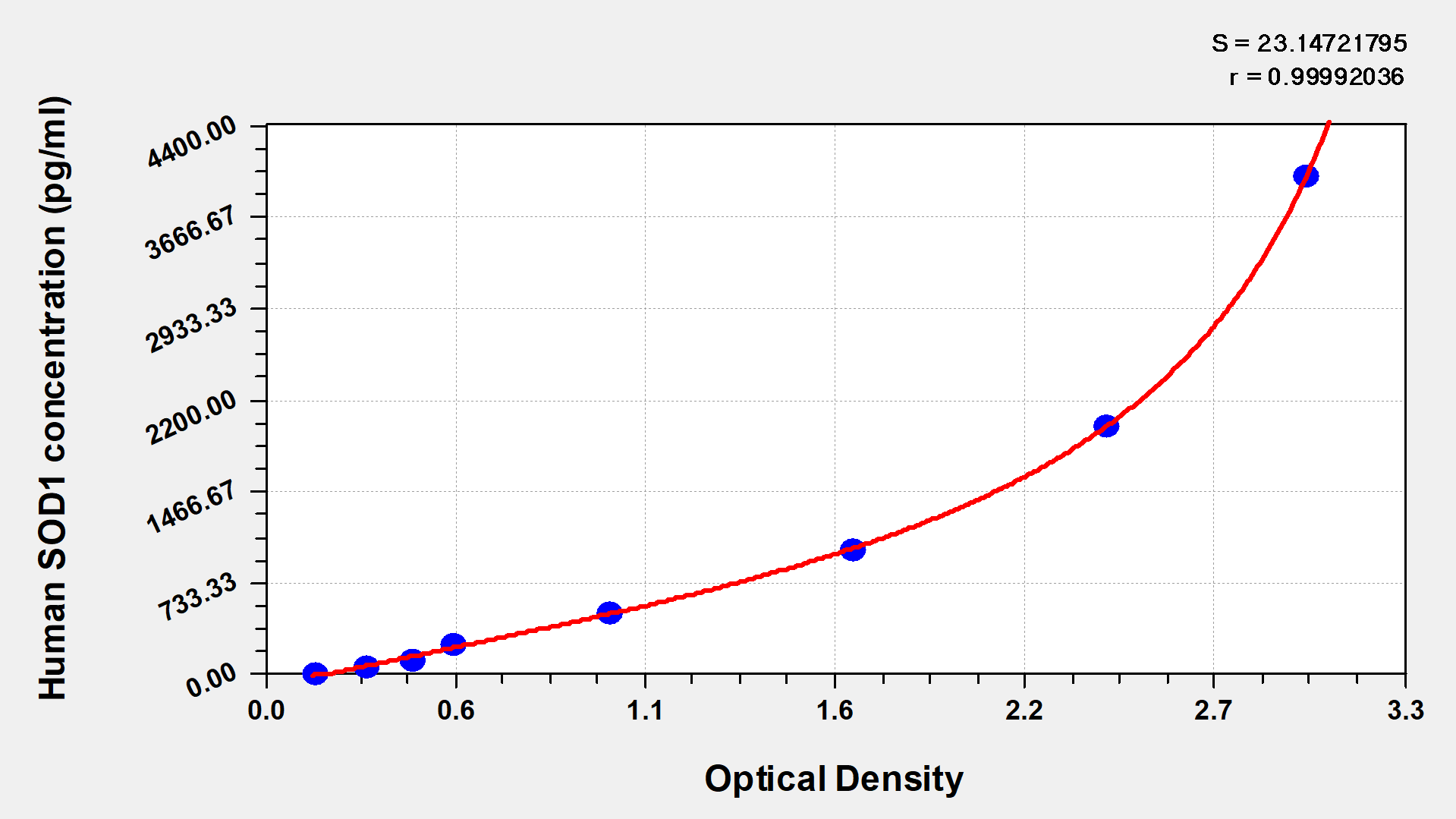Superoxide dismutase 1 (SOD1) is an antioxidant enzyme that catalyzes the dismutation of superoxide radicals into hydrogen peroxide and molecular oxygen. This copper-zinc containing enzyme is found predominantly in the cytoplasm and plays an important role in cellular defense against oxidative stress. SOD1 dysfunction has been linked to various pathological conditions, including amyotrophic lateral sclerosis, where mutations in the SOD1 gene account for a significant portion of familial cases. The enzyme's activity is necessary for maintaining cellular homeostasis and protecting against reactive oxygen species-mediated damage.
The Human Superoxide dismutase [Cu-Zn] (SOD1) ELISA kit (CSB-E16845h) uses a quantitative sandwich measurement principle for detecting SOD1 in human serum, plasma, and homogenates. The assay offers a detection range of 62.5 pg/ml to 4000 pg/ml with a sensitivity of 15.6 pg/ml. The protocol requires 50-100 μl sample volume and can be completed within 1-5 hours, with detection performed at 450 nm wavelength.
Application Examples
Note: The following application examples are drawn from a selection of publications citing this product. For additional applications, please refer to the full list of references in the "Citations" section.
This ELISA kit has been used in research examining oxidative stress and antioxidant enzyme activity across various biological systems. Studies have applied the kit to quantify superoxide dismutase levels in both cellular and tissue samples, supporting research into antioxidant defense mechanisms and oxidative damage pathways.
• Cellular stress research: Measurement of antioxidant enzyme content in cultured cells under different environmental conditions to evaluate cellular oxidative stress responses
• Cancer research: Quantification of superoxide dismutase levels in gastric cancer cell lines and tumor tissues as part of oxidative stress biomarker profiling
• Hepatotoxicity studies: Measurement of antioxidant enzyme concentrations in mouse models examining liver injury and inflammatory responses
• Biomarker analysis: Integration with other analytical markers to evaluate oxidative stress status and antioxidant capacity in experimental systems






